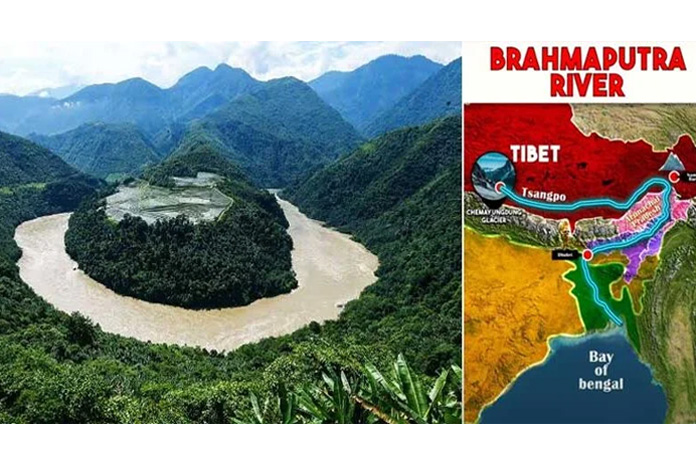Itanagar – In an alarming development for stability in South Asia, China has approved the construction of the world’s largest dam over the Brahmaputra, near the Indian border. The hydropower project and dam is proposed to come up in the lower reaches of the Yarlung Zangbo River, the Tibetan name for the Brahmaputra. The dam will be constructed at a huge gorge in the Himalayan reaches where the Brahmaputra river makes a huge U-turn to flow into Arunachal Pradesh and then to Bangladesh, from where it feeds into the Bay of Bengal.
The dam will be the world’s largest hydropower dam, kicking off an ambitious project on the eastern rim of the Tibetan plateau that could affect millions downstream in India and Bangladesh, potentially even changing the course of the Brahmaputra river, which sustains the lives of tens of millions of people in India and Bangladesh.
The announcement is likely to raise concerns in the neighbourhood as the dam will allow China to control the water flow as well as enable Beijing to release large amounts of water flooding border areas in times of hostilities, given the size and scale of the river. Notably, India is also building a dam over Brahmaputra in Arunachal Pradesh.
The dam, could produce 300 billion kilowatt-hours of electricity annually, according to an estimate provided by the Power Construction Corp of China in 2020.
That would more than triple the 88.2 billion kWh designed capacity of the Three Gorges Dam, currently the world’s largest, in central China.
Chinese Authorities have not indicated how many people the Tibet project would displace and how it would affect the local ecosystem, one of the richest and most diverse on the plateau.
But according to Chinese officials, hydropower projects in Tibet, which they say hold more than a third of China’s hydroelectric power potential, would not have a major impact on the environment or on downstream water supplies.
India and Bangladesh have nevertheless raised concerns about the dam, with the project potentially altering not only the local ecology but also the flow and course of the river downstream.
The Yarlung Zangbo becomes the Brahmaputra river as it leaves Tibet and flows south into India’s Arunachal Pradesh and Assam states and finally into Bangladesh.










